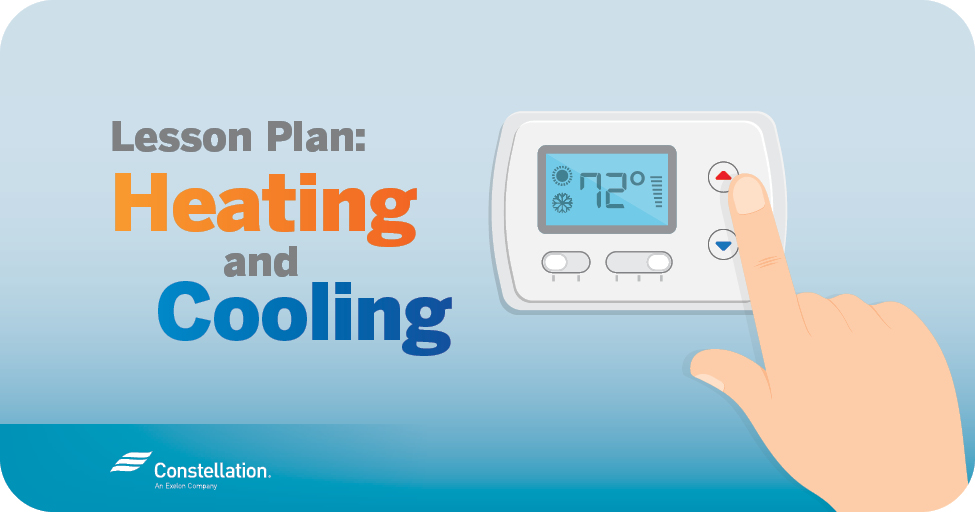Let’s play a game of hot and cold. You guess the answer and if you’re correct – you’re hot, and if you’re wrong, you’re not! What systems in the home use the most energy? If you guessed heating and cooling systems, you’re getting VERY hot right now!
Space heating and cooling account for more than 40% of the average home’s utility expenses. If the average household energy expenses $1,850, more than $800 per year is spent on keeping homes a comfortable temperature for its inhabitants. Most homes use electricity for cooling (air conditioning) and/or moving air around with fans. For heating, most homes will use natural gas, electricity, fuel oil, kerosene, or propane. When we’re paying so much to keep our homes at a comfortable temperature, in most climates, it is helpful to make sure your home is insulated and sealed appropriately so that the “bought air” doesn’t escape. Air is always trying to move, from areas of high temperature to lower temperature. If your home has any cracks or places for air to escape or creep in, your heating or cooling system will need to work overtime to fight this. Insulation and proper sealing help to limit the movement of this thermal energy, and also help to ease the work load of your heating and cooling systems. These activities will explore temperature, and conduction, convection, and radiation in the home with a fun, hands-on engineering challenge to design their own insulated home using a cardboard box!
Looking for more home energy activities? We’re pleased to work with The National Energy Education Development Project (NEED), to deliver these fun activities. Be sure to check out their library of resources, and their specialized collection of energy-themed distance/at-home learning activities. All activities are totally free for use at home or school, and accessible by visiting their website, www.NEED.org.
- Background reading: School Energy Experts, Understanding Thermal Energy, Heat
- Printable worksheet: Exploring Temperature
- Background reading: School Energy Inspectors, Understanding Thermal Energy
- Printable worksheet: Insulation Station
Seal of Approval will ask students to look around their home for tiny air leaks around windows, doors, and even outlets. Students will use simple household items like toilet paper and a pencil to help identify drafts, or places where air can sneak out or into their homes. Simple weather stripping, caulking, or other seals can be employed in these spaces to help save money and energy! As a culminating, hands-on challenge, Energy House Challenge asks students to construct a model house out of a cardboard box and insulate it using common packing materials like padded/packing paper, bubble wrap, and cotton batting. Students must build their homes to fit with the local energy-conscious building code, and decide how they will insulate it. After construction, they will “cool” the home using ice cubes, and set it outside to determine how effective their insulation is at allowing the house to stay cool and keep the hot air out. This activity can also be reversed on a cool day. Use a handwarmer or a mug of steamy water inside the house to “heat” the home. If taken outside on a cold day, their insulation will hopefully help to keep the house warmer than the outside!
Join our friends from NEED as they demonstrate the benefits of insulation and how to build your own energy house in the video below.
Additional support links:
- https://switchon.org/ (Free signup for all video clips)
- https://www.eia.gov/energyexplained/
- https://www.eia.gov/kids/
Fall Lesson Plans:
- Lesson Plan 1: Biomass
- Lesson Plan 2: Hydropower
- Lesson Plan 3: Water Conservation
- Lesson Plan 4: Climate Change and Energy Conservation
Spring Lesson Plans:
- Lesson Plan 1: Energy Basics and Energy Sources
- Lesson Plan 2: Electricity and Electricity Generation
- Lesson Plan 3: Conservation at Home
- Lesson Plan 4: Wind and Natural Gas
- Lesson Plan 5: Solar Energy
- Lesson Plan 6: Understanding Your Energy Bill
- Lesson Plan 7: Measuring Your Electricity Consumption
- Lesson Plan 8: Lighting and Appliances
